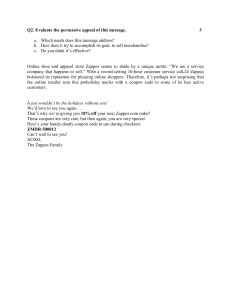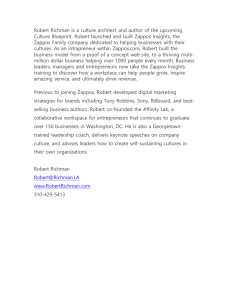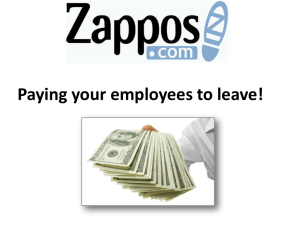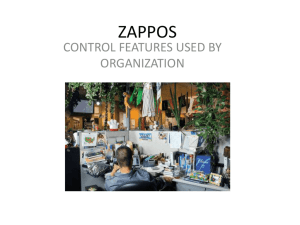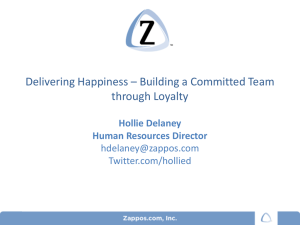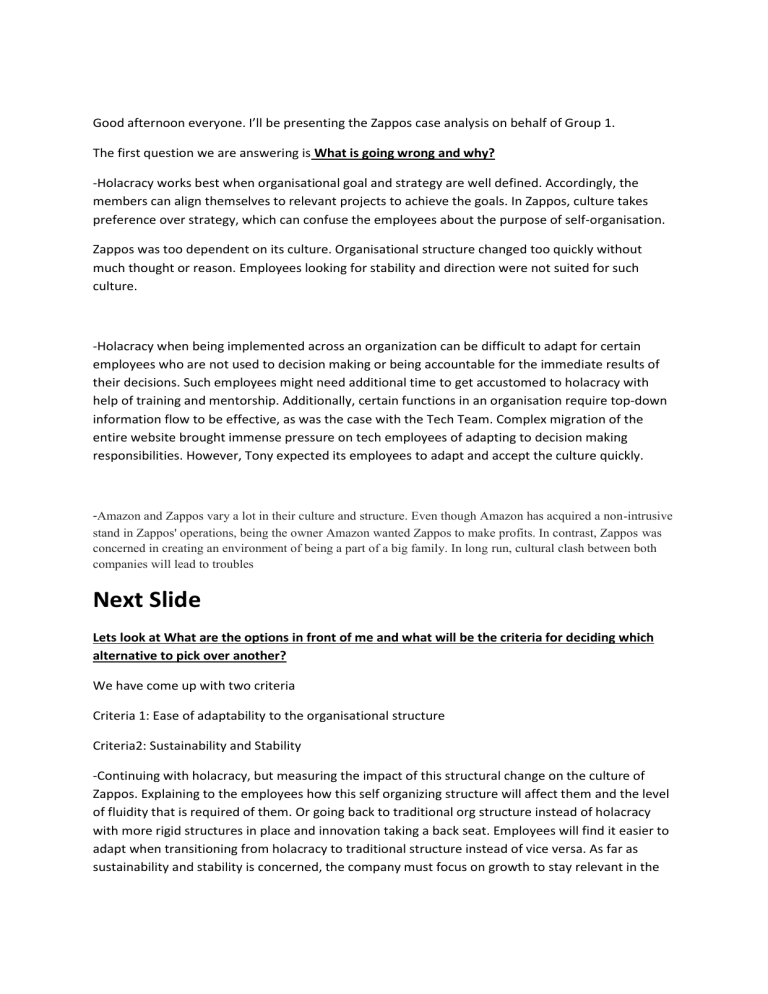
Good afternoon everyone. I’ll be presenting the Zappos case analysis on behalf of Group 1. The first question we are answering is What is going wrong and why? -Holacracy works best when organisational goal and strategy are well defined. Accordingly, the members can align themselves to relevant projects to achieve the goals. In Zappos, culture takes preference over strategy, which can confuse the employees about the purpose of self-organisation. Zappos was too dependent on its culture. Organisational structure changed too quickly without much thought or reason. Employees looking for stability and direction were not suited for such culture. -Holacracy when being implemented across an organization can be difficult to adapt for certain employees who are not used to decision making or being accountable for the immediate results of their decisions. Such employees might need additional time to get accustomed to holacracy with help of training and mentorship. Additionally, certain functions in an organisation require top-down information flow to be effective, as was the case with the Tech Team. Complex migration of the entire website brought immense pressure on tech employees of adapting to decision making responsibilities. However, Tony expected its employees to adapt and accept the culture quickly. -Amazon and Zappos vary a lot in their culture and structure. Even though Amazon has acquired a non-intrusive stand in Zappos' operations, being the owner Amazon wanted Zappos to make profits. In contrast, Zappos was concerned in creating an environment of being a part of a big family. In long run, cultural clash between both companies will lead to troubles Next Slide Lets look at What are the options in front of me and what will be the criteria for deciding which alternative to pick over another? We have come up with two criteria Criteria 1: Ease of adaptability to the organisational structure Criteria2: Sustainability and Stability -Continuing with holacracy, but measuring the impact of this structural change on the culture of Zappos. Explaining to the employees how this self organizing structure will affect them and the level of fluidity that is required of them. Or going back to traditional org structure instead of holacracy with more rigid structures in place and innovation taking a back seat. Employees will find it easier to adapt when transitioning from holacracy to traditional structure instead of vice versa. As far as sustainability and stability is concerned, the company must focus on growth to stay relevant in the future. Even though holacracy might work for smaller organisations, in the long run traditional structure would work the best. -Understanding and communicating The change in decision making authorities and their implications. -According to the current strategy zappos is very much focused on customer satisfaction. They can continue with the same strategy hoping for return customers to contribute the bulk of the profit. Or else the company can focus on Profitability and cash generation as these are crucial to the survival of any business in the long term. This would require them to change few of their customer related policies in line with the industry practices, basically targeting cost cutting. -Depending solely on WOM for marketing might not be very wise as Zappos doesn’t have direct control of this mechanism. Instead Zappos can invest in other marketing strategies as well to have a larger customer base in the future. Economic downturns or industry slowdowns can only be tackled by actively investing in marketing. Now that Zappos is going international and entering new markets, such costs are a must, along with WOM and media sensation, to have advantage over the competitors. Next Slide Now, How will I implement my solution in the short-term and long-term? In the Short term -Structural change to holacracy can be done at a slower pace , while measuring the impact of the change. Start small, implement Holacracy in one or two teams and, little by little, scale Holacracy to include more teams in the organization. -Employees feedback (regarding the structural change to holacracy) should be taken and their concerns with adapting to holacracy need to be addressed. Also, suggestions should be taken to implement holacracy better in the Zappos structure. Zappos should experiment with employee feedbacks to see which are working and which are not. Next Slide In the Long term -Long term Strategy should Focus on profitability and Cash generation as well to keep the company afloat.(to avoid cashflow problems and increase revenue). Zappos should also invest in marketing strategy other than WOM. ( for example: referrals can be given to existing customer’s friends and family. By this Zappos will be able to acquire new customers) -Holacracy might not be feasible for large companies where there is a greater number of employees and teams and there is a need for coordination and interdependence for certain tasks/projects. Over time, Zappos should keep adding smaller team to its holacracy structure and make changes if needed.
